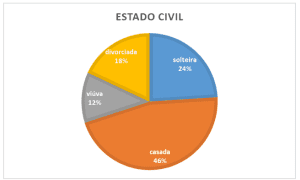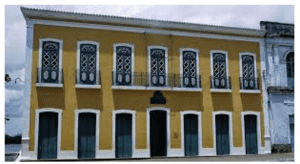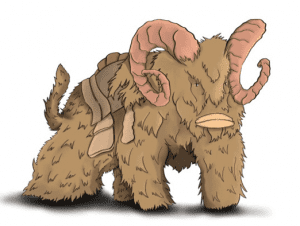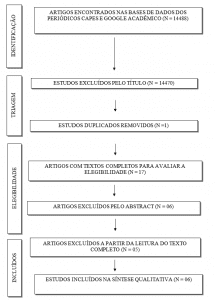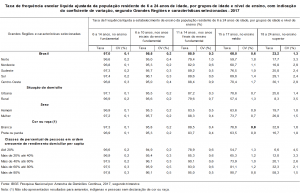ORIGINAL ARTICLE
ZAMBOLIN, Rosimeire Aparecida Asunção [1], PRIORI, Angelo [2]
ZAMBOLIN, Rosimeire Aparecida Asunção. PRIORI, Angelo. The War of Porecatu: Blood-red feet in search of an Eldorado. Revista Científica Multidisciplinar Núcleo do Conhecimento. Year 05, Ed. 10, Vol. 03, p. 96-115. October 2020. ISSN: 2448-0959, Access link: https://www.nucleodoconhecimento.com.br/history/war-of-porecatu
ABSTRACT
This bibliographic review study aimed to present the Porecatu War, which took place in the mid-40s and early 50s, and which is considered of great importance for the History of Paraná and Brazil, given its conceptual breadth to pass by approaching the concept of Regional History and being revealed by National History insofar as it discusses the problem of the struggle for land, in this case involving some groups in particular: squatters, land grabbers and farmers. The work can also be seen as a pedagogical strategy, that is, a way of approaching the construction of historical knowledge, and because it is a theoretical survey of a qualitative nature, it appropriated the results of studies by renowned authors such as the historian Angelo Priori (2000; 2009; 2011; 2012); journalists and writers Oikawa (2011) and Diego Antonelli (2016); by the writer Osvaldo Heller da Silva (2006) and the writings of the military police of Paraná, based on the notes of Captain Rosa Filho (2003). The result shows the possibility of this material as content of Local and Regional History, and the importance of being revealed to those interested in the theme, since the Porecatu War was a resistance movement where workers were exploited and expelled, serving capital, politics of the time and the powerful landowners.
Keywords: War of Porecatu, Regional History, Paraná, Communist Party, Social Movements.
1. INTRODUCTION
This article, based on a literature review, had as its main objective to present the reasons and the results of the Peasant Revolt of Porecatu.
The History of Paraná tells that, in the mid-1940s, in search of a new Eldorado, many men and women went to the Vale do Paranapanema, in the north of the state, attracted by the offer that the intervener Manoel Ribas made to those who wished to colonize the vacant lands in that region and take possession of it there.
However, faced with the greed of land grabbers, these peasants resorted to a guerrilla, as early as 1942, organizing themselves into Leagues[3] to fight for the definitive possession of these lands (ANTONELLI, 2016). And it was in this period that these squatters, supported by the Brazilian Communist Party-PCB, took up arms, in a resistance movement, treading on blood, to defend what had been proposed to them, that is, the idea that if their families colonized and carried out their work in that locality, they would be granted land ownership titles. But, that’s not how it all happened. There, the sad event known as Guerra or Guerrilha de Porecatu was unleashed, a movement of insurgents that took place in the late 1940s and early 1950s, where land grabbers took a stand against the squatters, and became the main characters in this land conflict. in Paraná, in the 20th century (PRIORI, 2011).
This struggle for land is a current theme throughout Brazilian territory, and what may seem to be happening far from the regionality where the reader lives, was actually also an event of local history. Therefore, it is important to work on the issue of the identity of historical subjects and ensure the appropriation of knowledge, based on the results of research and selected reports, valuing the historical heritage of the locality.
This research work, based on a bibliographic survey cataloged on reliable websites, printed works and periodicals, aimed to tell what Regional History has already raised about this period in the History of Paraná, bringing to light references such as the works of Professor Dr. Priori (2000; 2009; 2011; 2012); journalists and writers Oikawa (2011) and Diego Antonelli (2016); by the writer Osvaldo Heller da Silva (2006) and the writings of Captain Rosa Filho (2003) which brings the Paraná military police’s view of the event.
The conceptual breadth of this theoretical survey went through the approach of the concept of Regional History which, according to Cerri (apud ALEGRO et al., 2013), is the one considered responsible for the study of the circumscription of each city, in this case, the municipality of Porecatu and their training; as well, he became interested in the analysis of Brazilian agrarian issues to deal with that specific moment. He also thought about the scope of local history that relates to small localities, which is not always written by historians, and which suffer from the neglect of school contents (SCHMIDT; CAINELLI, 2004).
In its first moment, the research presents the New Eldorado[4], its geographical and chronological location, bringing to light data that need to be remembered by History and that are embedded in the collective memory, although largely forgotten by school books.
Next, it reports what the aforementioned references considered the most important points of this confrontation, highlighting the participation of the Brazilian Communist Party, which was flanked by one of the protagonists of this war: the squatters. We then come to the conclusion that, although there was enormous injustice against those who dreamed of the Eldorado, the landowners appropriated the political support of the State, and shady tools, such as false documents and support from some members of the judiciary, and perpetuated their names, such as those that would have leveraged progress for the guerrilla region and for the city of Porecatu. And, it is concluded that the Brazilian Communist Party made that belligerent moment a laboratory of armed struggle in the field, but later, throughout this period until the present day, they forgot to count the sequence of errors evaluated in the experience in the Paraná[5].
This conflict, which took place in the 40s and 50s, had national repercussions, however, the theme is not recurrent in History classes, in a lapse of memory, considered by Osvaldo Heller da Silva (2006) as a “historiographical amnesia” and, therefore, it deserves to be recalled in time to consider episodes that were responsible for the social and cultural formation of one of the most promising states of the federation, which, in its agrarian colonization, suffered from different experiences, such as the class conflict (squatters and landowners). ) that led to the Revolt, War or Guerrilla of Porecatu.
In order to deal in an organized way with the result of this research, the writing was established in three different moments, defined by topics, to better guide the reader to achieve the established objectives.
Topic one was reserved for the explanation of the policy of that moment, known as the Homestead Act [6] and the clarification of where the Eldorado do Paraná was located. Then, the Conflict and the Action of the Brazilian Communist Party as support to the squatters and, then, it was talked about what is learned from the memories of the Porecatu Revolt.
2. THE HOMESTEAD ACT POLICY FOR ELDORADO DO PARANÁ
In 1940, the news spread that there were 120,000 hectares of vacant land in the north of the State of Paraná (FELISMINO, 1985). Hundreds of families were attracted by this promise, and left for that location, with the intention of populating the production.
These empty, uninhabited lands were the Eldorado waiting to be cultivated, colonized and sown by families who left Minas Gerais, São Paulo, the northeast region and other parts of the State of Paraná, in the confidence that there they would raise their children and be able to maintain its legal possession (ANTONELLI, 2006).
Figure 1- Location of vacant lands- Current map
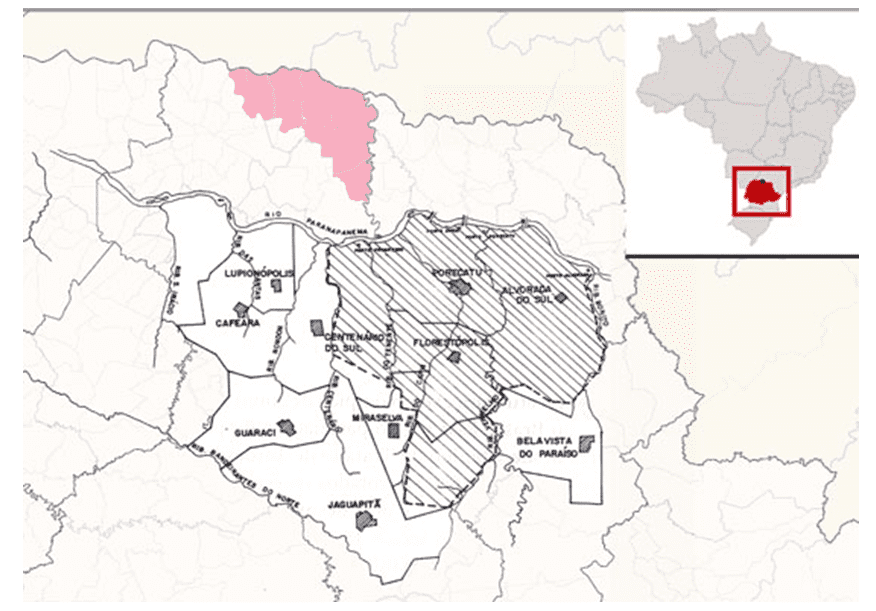
“It was an area covered by the Atlantic Forest”, says Nossa (2010, p. 14). Eldorado was located in the region between the Paranapanema and Centenário rivers, in the north of the state of Paraná, on the border with São Paulo, in the region of the cities of Porecatu, Centenário do Sul, Jaguapitã and Guaraci, location indicated by the exploration and colonization company of the intervenor Manoel Ribas (FELISMINO, 1985).
Still on the location of this Eldorado, historian Angelo Priori (2009, p.2) clarifies:
A região denominada como Porecatu está encravada no extremo norte do Estado do Paraná, situada no Vale do Paranapanema. A colonização dessa região começou no final dos anos de 1930, no contexto da nova política de terras implementada pelo Governo Vargas e conhecida como Marcha para o Oeste.
The attraction of this government campaign was to achieve better living conditions, because, from the possession of a portion of these lands, settling in that place, families would have the chance to organize land ownership, structuring it as determined, or that is, “through the cultivation of coffee, food crops and the raising of pigs” (PRIORI, 2003, p.1).
It is worth remembering that the State of Paraná had the domain of vacant lands and the recognition of the legitimacy of the possessions granted by sesmarias or other concessions, and that “in Paraná, the intervener Manoel Ribas, inspired by the Homestead Act, by Abraham Lincoln”, called on those who interested in occupying up to 200 hectares of forest “for a minimum price of 18 mil-réis per hectare”[7], says Oikawa (2011, p.15).
According to Oikawa (2011, p.27-28):
Porecatu encontra-se […] localizada a 22º45’ 21’’S 51ºss’44’’º às margens do rio Paranapanema. Tem uma área de 291,665Km e faz divisa ao norte com os municípios de Taciba e Narandiba no Estado de São Paulo, ao sul com os municípios de Florestópolis, a leste com Alvorada do Sul e a oeste com Centenário do Sul […] A região denominada como Porecatu, desde os primórdios do Brasil Colônia, é formada atualmente pelos municípios de Porecatu, Alvorada do Sul, Florestópolis, Mirasselva, Centenário do Sul, Lupionópolis, Cafeara, Guaraci e Jaguapitã.
Even today, it is known that this region consists of a fertile soil of terra roxa, but that no longer rests under the shadows of green forests, but is trampled by rural workers, especially sugar cane and of soy, crops that took the place of coffee.
Priori (2011, p. 19) clarifies that: “Paraná in the 19th century was a province almost exclusively inhabited along the coast and in the Campos Gerais region”. It was the Land Law of 1850 that allowed access to vacant land, by occupation, and access to properties based exclusively on purchase. This did not inhibit the government of Paraná from alienating their lands in the extension of their domains to those who “proposed, through work, to make them useful or else, do some service that would benefit the community” (PRIORI, 2011, p.22). ).
On this occasion, “the State, without many financial resources, transferred large amounts of land to private companies […]” and in this process of granting public lands, the colonization policy was formulated, with the objective of founding colonial nuclei, “destined to to foreign immigrants” (PRIORI, 2011, p.23).
The Paraná Plantation Limited holding company created the Companhia de Terras Norte do Paraná, which organized and resold 515,000 bushels of land, in an ambitious process of colonizing the center-south of the country, with advertisements that extended to Europe and Japan. But, in 1938, the Interventor of Paraná, Manuel Ribas, pointed out an extension of the fraudulent process of these concessions to such private companies (PRIORI, 2011).
There were in fact the concessions to the colonizers and then they were revoked because the government of Paraná realized that not all the colonizing companies were acting in the real estate process, which caused many to be revoked.
All these steps ended up being developments of the Land Law, Law 601/1850[8], where the process of granting public lands to a private company generated speculation and wrong transactions, leading to clashes and violence in these areas (PRIORI, 2011).
The political proposal of the March for the West, of the federal government, aimed at an agrarian reorientation, aiming at the intensification of production under the intervention of the State, and Paraná did not shy away from elaborating legislation for this agrarian process, after the 1930s (PRIORI, 2000).
In the early 1940s, from the Decree onwards, anyone could apply for a plot of land with 200 hectares, and then had to “obey only one rule: cut down the forest, plant, produce and live in possession for six years” (OIKAWA , 2011, p.51). At the end of this period, you could apply for the definitive title to the property.
Priori (apud OIKAWA, 2011, p.51) informs that in order to have definitive rights over the lot, the buyer should present, within two years, documents that prove the existence of habitual housing and effective culture, in addition to making the full payment of your land.
But all this was valid, after all, they were in search of the “promised land” (emphasis mine). However, for that Eldorado, the eyes of the greedy also shone. And the State’s ill-conceived policy allowed the right of property to be superimposed by two groups: the squatters who were attracted by the desire to become legitimate owners of this piece of land and those who revalidated the titles of the former concession and its buyers. (often large farmers, already trained in agricultural mechanization and in the cultivation of the best types of coffee on a large scale) (OIKAWA, 2011).
Among these large landowners, who bought land occupied by squatters, Oikawa (2011) highlights those from the Lunardelli family, who acquired large lots, based on contracts that guaranteed that the lands were unoccupied, disregarding the demarcation made by families or family groups of the squatters. squatters.
However, not only the Lunardelli family, other families also took possession based on this shady way, as Antonelli reports (2016, p.76): “At least 10 large land grabbers forged false documents and attested that the lots already had owners”.
This was, therefore, the propitious scenario for the unfolding of a historical plot, of blood and sweat, that took place in the Paranapanema Valley, which made the squatters and their families be forced to tread in blood to keep the dream that there he had brought them.
It should be noted, however, that the conflict only took place as a form of defense, as the squatters and their families were suffering violent reprimands from the police and gunmen, at the behest of land grabbers and large landowners, as well as suffering from the decisions courts that forced them to abandon their land holdings (PRIORI, 2011).
In this way, deprived of their rights and of their hope of owning that possession, feeling that they would be expelled from the land, they sought to organize and react, formulating, based on the Peasant League, defense arguments that would allow them to preserve the conquest of Eldorado. . After all, this was the policy first announced by Manoel Ribas and the squatters wanted land and not power, as the squatters/farmers and politicians of the time prized.
2.1 THE CONFLICT AND PERFORMANCE OF THE BRAZILIAN COMMUNIST PARTY
Faced with the announcement that there were top quality vacant lands in the Porecatu region, many small farmers believed in their existence and came to the place. But there were also not a few speculators, large landowners who, knowing of the existence of these empty lands, advanced on them in a disorderly way, and that was how these areas turned into chaos (SILVA, 1996).
The Dinarco Reis Foundation website (2016) reads that:
Em 1934, o interventor Manuel Ribas (1932-1945) anulou a concessão e loteou as terras, a preço barato, para quem quisesse trabalhar. Como tantos outros antes dele, José Bilar (“Espanhol”) chegou à região em 1940. Cito outros: Francisco Lourenço Figueiredo (“Chico Quiabo”), Herculano Alves de Barros e Lázaro Bueno de Carvalho (“Lazão”). A maioria comprou sua terra, outros eram “grileiros”, mas de boa-fé.
The interventionist Manoel Ribas had encouraged the clearing of forests and the cultivation of land on a large scale with a view to the progress of northern Paraná, and the squatters headed there confident of official encouragement, in good faith, believing that the whole area still it had not been given definitively to anyone (ROSA FILHO, 2001/2004).
There was, then, a mad rush to acquire these vacant lands, which were granted on the basis of a simple application and payment of insignificant fees. The deadlines for public notices were reduced and the price per hectare was fixed according to convenience.
In this regard, Rosa Filho (2001/2004, p.17) also reveals that
[…] os prazos para editais foram reduzidos de 30 para 10 dias; os prazos para as vistas, de 10 dias foram para 48 horas; os prazos para pagamento, de 4 meses para 30 dias; o preço do hectare fixado ao sabor das conveniências; as ordens de urgência na localização e ocupação, dadas sem nenhuma atenção de medição e demarcação; chefes de serviço de demarcação no interior eram chamados à Capital para acertar com os próprios interessados a delimitação de suas áreas.
When the end of the Lupion administration came to an end, the negotiation was in place, so much so that the Land Department worked until late at night in hotel rooms in Curitiba, and outside them, sellers of land applications already dispatched, with or without location, or with or without payment, and other times in the names of the deceased, “for 30, 40 or 50 thousand cruzeiros”, remembers Rosa Filho (2001/2004, p.17).
It can also be inferred that, in the beginning, with the granting of land, many private companies bought vast areas, when the initiative of directed colonization took place. The State transferred the burdens and responsibility of colonization to them, but from that, immense unproductive large estates were formed, which made the State itself encourage colonization again for occupation and development. It generated all this drama.
It happened, however, that with the rise in coffee prices, with the replacement of the intervention by the government of Moisés Lupion, these lands in the north of the state became targets for shady business and there was a real race in search of definitive titles. of those so fertile red lands, which ended up being granted to “the governor’s associates by means of a simple request for payment of tiny fees” (ROSA FILHO, 2003, p. 17).
The Dinarco Reis Foundation (FDR, 2016, p.2) recalls that:
Manuel Ribas comprometera-se com os camponeses. Entretanto, o quadro mudou com a posse de Lupion (12/03/1947), ex-procurador de Jeremias Lunardelli, o ‘Rei do Café’. Lupion assinou um decreto à feição da grilagem de Lunardelli e pôs à sua disposição a Força Pública para obrigar os camponeses a ‘abandonarem’ as terras cuja propriedade, depois, iria requerer.
Antonelli (2016, p. 77) confirms this information stating that: “Groups that were in the shadow of Lupion went so far as to falsify maps to have the squatters’ lot”.
All this ended up resulting in a conflict, as the rights of the squatters were denied, whose names were being, literally, scratched from the plans and sheets of the processes, with the issuance of duplicate definitive titles, where the Government resold what it had already sold to another (ROSA FILHO, 2001/2004).
There was a lot of confusion, therefore, Rosa Filho (2001/2004) says that there was even the plucking of leaves from the processes, having reached the culmination of the sale of an area of over 130 thousand bushels of land that did not exist in the territory of Paraná.
In view of this, the squatters needed to legalize the possession of their lands, leave the isolation and defend their interests, they had cut down the forests, occupied the land, made improvements, prepared the soil and planted, valuing the land with such occupation and then the farmers sought legal means to expel them from there, keeping the benefits. Therefore, from this chaotic occupation, the conflict over the possession of these lands began, which allowed “to trigger the process of implantation of the Brazilian Communist Party, in the countryside, and to model the first forms of collective representation of the peasantry, those of peasant leagues” (SILVA, 2006, p.19).
Oikawa (2011, p. 95) recalls that:
O termo camponês começa a ser usado em Porecatu pela primeira vez no Brasil para designar o trabalhador do campo, proprietário ou não, que desenvolva a agricultura familiar. É a transposição da linguagem da Internacional Comunista, baseada nas experiências soviética, europeia e da América espanhola […]. Em Porecatu a nova palavra – camponês, causa surpresa e estranheza aos proprietários rurais e também a imprensa.
These peasants needed help to face the ranchers’ jagunços, the fake notary owners, the corrupt judges and the military police, and it was for this purpose that they sought the help of the Brazilian Communist Party and, in 1948, they decided to arm themselves to fight (FDR, 2016).
The squatters had no one to turn to, given that the state government was the one who put them in this situation, having released a piece of news that later became a fallacy.
Priori (2011, p 63) recalls that Eric Hobsbawn (1998) points out three types of land occupation:
1) quando a terra pertence aos camponeses mas foi alienada, legalmente ou não, por alguém, de um modo que os camponeses não reconheçam esse caso como válido; 2) quando a terra é reivindicada simultaneamente por camponeses ou grandes proprietários, sendo que geralmente a terra é pública e de domínio do Estado; 3) quando a terra pertence a alguém, comprovadamente ou legalmente, mas ela é expropriada por outrem.
With this observation, it is verified that the first two cases are appropriate for the Porecatu conflict, considering the main characters of the plot: squatters, land grabbers and jagunços. But it is in the second type that the Revolt fits, since the land is claimed, at the same time, by the peasants and by the supposed owners.
Nilson Monteiro Menezes (2015, p. 148) endorses the already noted history, summarizing it as follows: “The occupation of vacant land, which began with the arrival of 300 squatters in 1940 and ended with about 3,000 in litigation in 1951 , ended up registering the resettlement of 380 families in the region”.
However, there are more detailed versions that accuse, especially the State Government, of being omitted to the first moments of resistance by the squatters, when the struggle was advancing, shortly after the possession of Moisés Lupion (1946-1950), who distributed land documents to large landowners, provoking revolt and resistance to the repossession warrants, because, after all, the squatters were already there within the prescribed period to obtain the definitive titles to those lands.
Pires et al (2010, p. 1), regarding the moment when the revolt began, say that:
Em 1946, Moisés Lupion assumiu o Governo do Paraná e iniciou novo processo de loteamento, dividindo a região em glebas extensas, que foram vendidas para grandes fazendeiros. As terras vendidas, contudo, eram aquelas ocupadas pelos posseiros, que Lupion considerou devolutas. É a partir deste momento que a insatisfação de ambos os lados, os posseiros e latifundiários, se agrava, iniciando o conflito.
Faced with the pressure made by farmers, land grabbers and the police themselves, in the sense of the squatters vacating the lands that they had plowed and trusted to be theirs, the Brazilian Communist Party collaborated with the organization of the resistance. After all, the conflict already existed there, but the squatters were at a disadvantage and were receiving threats against their lives.
Before taking up arms, the squatters moderated, filed legal appeals and requested government action, but while the government was silent, the large landowners relied on actions by jagunços and the police force to invade several properties.
It is also true that Governor Bento Munhoz da Rocha Neto, having taken over shortly after Moises Lupion, tried to negotiate peacefully with the squatters, proposing their resettlement by means of a decree. This proposal that the PCB called demagogic, as they believed that the governor would have been obliged to draft such a decree to satisfy the public, since such a decree was issued specifically for the municipalities of Rolândia, Jaguapitã and Porecatu, where there was less land to be expropriated (MENEZES, 2015).
Rosa Filho (2001/2004, p17) corroborates by writing that:
[…] assumindo o governo, Bento Munhoz da Rocha Neto prometeu legalizar a situação. No entanto, entre aqueles que chegaram ao norte do Paraná em busca de terra e dinheiro, vieram os malfeitores […] membros do Partido Comunista Brasileiro, que quiseram aproveitar da situação de geral confusão e avançar em terreno alheio. Ali fincaram o pé e, desde então, se mantiveram fiéis ao programa do seu partido.
The squatters who refused to leave their lands also took up arms and, to support them, the Brazilian Communist Party entered the scene, providing them with weapons and military training (PIRES et al, 2010)
Until then, in acts of violence, the rebels used only the weapons they had, that is, their work instruments, but, accepting the direction of the PCB, when this party proposed the constitution of armed resistance bands, the rebel squatters they ended up agreeing, proceeding with the formation of armed groups and physical resistance training, it was the year 1948. It was also under the guidance of the PCB that the Peasant Leagues were formed. These Leagues played an important role in solidarity with the movement, as the squatters ended up getting support from traders and peddlers to transmit important information and attracted sympathizers across the country (BARROS, 1989).
It is also worth considering the note by Oikawa (2011, p.166) who clarifies: “[…] the conflicts were not created by the PCB, but by the excesses and deviations of successive colonization policies adopted by the governments for the region”.
It is worth considering what Osvaldo Heller da Silva (2006, p. 59) reports:
Naquela época, o Partido Comunista tinha uma penetração limitada nos rincões do Paraná setentrional, como em todo o resto do país. Havia militantes isolados em Porecatu; alguns comitês locais nos municípios de Jaguapitã, Centenário, Porecatu, Arapongas, Rolândia, Cambé, Ibiporã, Cambará, Sertanópolis, Marrecas, Bandeirantes, Cornélio Procópio e Apucarana; um comitê Regional em Londrina e um outro de âmbito estadual, em Curitiba.
The very conception of communism was very particular, and the squatters themselves, even having accepted help, came to deny their interaction with this movement, because at that time there was an anti-communist ideology that was already present in the population. And it was the militants from Jaguapitã who had the first talks to strengthen ties with the Party. It is known that in October 1948, representatives of the squatters of Porecatu traveled to Rio de Janeiro to meet with the national leader of the “party” (emphasis added) and there they prepared a document that should be delivered to the federal authorities. And, from there, Partidão decided to act effectively in support of squatters in northern Paraná, aiming to take the lead in the resistance movement, constantly sending emissaries to the conflict region (SILVA, 2016).
“The conflict was fertile ground for social discontent, where the communists launched the sowing of rural communism […] .18)
Priori (2009, p.5) emphasizes that “The decision of the Brazilian Communist Party to take over the organization of the armed struggle in Northern Paraná was formally implemented in November 1948 […]”.
This is how, in the late forties, the PCB circulated the proposal for a Statute that aimed to broaden the discussion on the formation of Peasant Leagues where it called on squatters to fight for essential questions for their lives such as: bank credits, prices for production , better salaries, etc. (PRIORI, 2009).
Heller da Silva (2009 b, p.111) concludes that:
Porecatu seria mais um entre os conflitos pela posse fundiária não fosse a entrada em cena dos comunistas, […]. Esse conflito permitiu a aparição dos primeiros organismos de tipo sindical a enquadrar o campesinato: as Ligas Camponesas.
What the author indicates is that, in the wake of Porecatu, many unions spread across the north of the state and became the basis of all future union apparatus, not only in Paraná, but throughout Brazil. This, of course, was a result of that revolt.
The truth is that, when the squatters did not have the ugly promises made by the Government, the PCB found there a great opportunity to establish itself as a party, which did not prevent them, throughout history, from being silent about the episodes that occurred in Porecatu, keeping silent about the Party’s participation in the Revolt, given that the effects caused on its leaders due to the discomfort caused by the denunciation of “a certain Captain Carlos”[9] (emphasis added).
Not all squatters allied with the PCB were seen with good eyes. The Police Department for Political and Social Order-DOPS, through its delegates, installed a preventive regime against the demonstrations and began to take steps in the Porecatu region, spreading a project of fear in order to weaken the organization of the squatters and their communist allies and, “It can even be said that the strategy was successful, since within ten months the agency managed to put an end to peasant resistance” (PRIORI, 2011, p.173).
The DOPS proposed desertion as a strategy for those who were convinced to abandon the armed struggle and become informants of the criminal process installed. And it was at this stage that many squatters were arrested, and the last and intense police action lasted two months and was installed on June 21, 1951, using a process of sweeping the conflagrated region, carrying out inspections in several camps and arriving the banks of the Paranapanema without any resistance (PRIORI, 2011).
This is how, in mid-July 1951, after this sweeping operation, the State Government activated the Land Commission to settle the peasants in colonies of Centenário, Iporã, Campo Mourão and Paranavaí, receiving lots of 5 to 20 bushels of land. of lower quality, because the first-class lands were actually in the possession of the farmers (PRIORI, 2011).
2.2 WHAT IS LEARNED FROM THE MEMORIES OF THE PORECATU REVOLT
There is little publicity about the agrarian conflicts that took place in Paraná and the Porecatu Revolt or War is one of those important cases that require the scholar to approach a struggle that was carried out by poor and dreamy peasants who resorted to a state proposal for colonization, but, that ended up being swallowed up by the expansion of rural capitalism.
In the Peasant Revolt of Porecatu, squatters were expelled, and their lands were appropriated by large landowners, in a little-known historical context, where the reason for the conflict was not power, but legal ownership of the land.
Leocádio and Ivano (2010, p. 1180) recall that, in the case of the Porecatu Revolt:
Devemos levar em consideração o fato de que toda uma memória sobre a guerra foi silenciada propositalmente, jogada ao ostracismo do esquecimento justamente para que os erros e equívocos cometidos pelo PCB […] não viessem a tona para serem devidamente julgados. Tentou-se manipular, indiscriminadamente, a memória daqueles que viveram e sofreram as amarguras da traição. Por acreditarem nas falácias do “Partidão”, ganharam como presente o limbo do esquecimento; foram desprezados por um Partido que optou em se manter integro em detrimento à memória daqueles que dedicaram sua vida em prol de uma ideologia que se mostrou, quando testada, egoísta ao extremo.
But the memory of those involved cannot be silenced in this way and forgotten. There are sources that are concerned with such truths and instrumentalize the interested party to know and investigate the facts.
For Le Goff (1996, p. 477):
A memória, onde cresce a história, que por sua vez a alimenta, procura salvar o passado para servir o presente e o futuro. Devemos trabalhar de forma que a memória coletiva sirva para a libertação e não para a servidão dos homens.
It is necessary to give ample appreciation to the history of the Porecatu Revolt, causing it to be located in a panel of conflicts in the North of Paraná, where the occupation and construction of the territory were not peaceful as some agents of history point out.
Dealing with terms such as: vacant lands, squatters and land grabbers, among others, is already a step towards discussing the struggle for land in the Porecatu Revolt.
Allegro et al (2008, p.5) tells, for example, that the Northern Paraná Land Company–CNTP, colonizer of the region, published a pamphlet entitled Norte do Paraná, where it presented the region as: “[…] an Eldorado, where there are no gold mines but where gold is made of everything”. However, it was not the CTNP that colonized Porecatu, it was a publication that affirmed the image of a Land of Promise, with the idea of progress, but who wrote about the conflicts for the conquest of this Canaan?
The authors talk about several albums that commemorate anniversaries, advertise, elevate biographies, sing about the fertility of the land, including highlighting that two reporters who were with Bento Munhoz da Rocha would have written that the conflicts that occurred in Porecatu would have been resolved. It is always a discourse of happiness to the detriment of the violence of that moment.
So how to do?
It is necessary for History to discuss the use of violence in these and all agrarian conflicts, whether as action or reaction; discuss political participation in this environment, as in the case of the PCB in the Peasant Revolt of Porecatu, weighing its actions, influences and objectives. It is important that the Peasant Revolt of Porecatu is situated in the history of struggles for land, making it possible to perceive its complexity and the continuity of land conflicts in Brazil. After all, how are the land distribution policies and agrarian reform in Brazil?
The Porecatu Revolt needs to lead to this assessment of the agrarian question, the occupation of Brazilian soil, the land tenure structure and the struggles and conquests already achieved in this country.
FINAL CONSIDERATIONS
The versions about the Porecatu Revolt or Guerrilla are, for the most part, defenders of the squatters and accusers of the State. However, it was possible to verify that, although the characters involved have different views of the outcome of that bellicose moment. For the PCB it would have been more than a mistake, but a real failure; a victory for the squatters, although it is not possible to absolutely agree, since the land for which they fought did not become a title of possession, but they agreed to accept legalized lots in other locations much further away, such as in Paranavaí, Iporã and Campo Mourão, recalls Priori (2011). For the land grabbers/farmers and the State’s proxies, the latter, yes, were worth every drop of blood shed by the jagunços to enforce the documents that were granted to them and to engrave their names in the History of Porecatu as makers of progress and builders of the future.
For this reason, among other more specific reasons for each person who has the material consulted here, it is required that Regional History asserts the collective memory, so that everyone can freely take sides in this history where the workers’ feet tread in blood in search of a New Eldorado.
This theme is very important, because the Porecatu Revolt is compared to Canudos, Contestado, etc., but these others have highlighted textbooks and bibliographies, which needs to be done by Local History with this resistance movement, where serving the capital and then are expelled and relocated to other locations as the powerful command.
REFERENCES
ANTONELLI, Diego. Terra Roxa de Sangue. Reclamando [on line]. Publicado em 07/12/2013. Disponível em:< http://reclamando.com.br/?system=news&action=read&id=42321&eid=142> Acesso em 03 set. 2017.
______. Paraná: uma história. Curitiba: Arte & Letra, 2016.
ARRUDA, Fausto. Porecatu e a Revolução Democrática. Rev. A Nova Democracia. Ano X, nº 89, maio de 2012. Disponível em:< http://anovademocracia.com.br/no-89/3974-porecatu-e-a-revolucao-democratica> Acesso em 12 maio de 2017.
BARROS, Vania Aparecida de. A Guerra de Porecatu. Projeto Folhas. Londrina, 1989. Disponível em:< http://www.gestaoescolar.diaadia.pr.gov.br/arquivos/File/producoes_pde/md_vania_aparecida_barros.pdf> Acesso em 12 set. 2016.
FELISMINO, Pedro Paulo. A guerra de Porecatu: a história do movimento armado pela posse da terra que sacudiu o Norte do Paraná nas décadas de 40 e 50. Folha de Londrina, 14-28 jul. 1985.
FERREIRA, Jorge. A Guerra de Porecatu. Revista O Cruzeiro. Ed. de 14 de julho de 1951. Hemeroteca da Biblioteca Digital do Brasil. XX – 112. . Disponível em:< http://memoria.bn.br/DocReader/docreader.aspx?bib=003581&pasta=ano%20195&pesq=GUERRA%20DE%20PORECATU> Acesso em 13 jun. 2017.
FDR. FUNDAÇÃO DINARCO REIS. Saldanha e Porecatu. Rio de Janeiro: PCB, 15/06/2016. Disponível em:< https://pcb.org.br/fdr/index.php?option=com_content&view=article&id=286:saldanha-e-porecatu&catid=6:memoria-pcb> Acesso em: 13 jan. 2017.
LEAL, José. Sangue na Terra Proibida. Rebelião no Paraná. Revista O Cruzeiro. Ed. 8, 9 de dezembro de 1950. Hemeroteca da Biblioteca Digital do Brasil. 58-96. . Disponível em:< http://memoria.bn.br/DocReader/docreader.aspx?bib=003581&pasta=ano%20195&pesq=porecatu> Acesso em: 2 jun. 2017.
LE GOFF, Jacques. Memória. In: História e Memória. Campinas, SP: Editora da UNICAMP, 1996, p. 423-477.
LEOCÁDIO, Leandro César. IVANO, Rogério. Guerra de Porecatu e a delação do Capitão Carlos: História e Historiografia de um personagem. Londrina: UEL, 2010. 1172-1185.
MENEZES, Nilson Monteiro. Ricardo Lunardelli: uma vida a serviço da terra. Curitiba: PR, 2015.
NOSSA, Leonêncio. Guerras desconhecidas do Brasil. Histórias de um país sem memória. Jornal O Estado de São Paulo. São Paulo, 19 de dezembro de 2010. Disponível em:< http://www.premiovladimirherzog.org.br/arquivo/254_2011_10_21_16_3_44.pdf> Acesso em 12 jan. 2017.
OIKAWA, Marcelo Eiji. Porecatu: a guerrilha que os comunistas esqueceram. São Paulo: Expressão Popular, 2011.
PEREIRA, Alceu. Reina Paz em Porecatu. Revista O Cruzeiro, de 25 de agosto de 1951. p. 66 – 72. Disponível em:< http://memoria.bn.br/DocReader/docreader.aspx?bib=003581&pasta=ano%20195&pesq=reina%20a%20paz%20em%20porecatu> Acesso em 11 jun 2017.
PIRES, João Ricardo Ferreira; BRAGAS, Pauliane de Carvalho; GERMANO, Ligia Beatriz de Paula. Revolta Camponesa de Porecatu. Portal do Professor. MEC: 22/11/2010. Disponível em:< http://portaldoprofessor.mec.gov.br/fichaTecnicaAula.html?aula=27034> Acesso em 12 nov. 2016
PRIORI, Ângelo Aparecido. A Revolta Camponesa de Porecatu: A luta pela
defesa da terra camponesa e a atuação do Partido Comunista Brasileiro (PCB) no campo (1942-1952). Dissertação de Mestrado, UNESP, Assis, 2000.
______. Os comunistas vão ao campo: A Revolta Camponesa de Porecatu e a ção do PCB (1948-1952). ANPUH. Anais do XXII Simpósio Nacional de História: História, acontecimento e narrativa. João Pessoa: ANPUH, 2003. Disponível em:< http://anais.anpuh.org/?p=13919> Acesso em 14 jan. 2017.
______. A Revolta Camponesa de Porecatu. ANPUH. Anais do XXV Simpósio Nacional de História: História e Ética. Fortaleza: ANPUH, 2009. Disponível em:< https://anais.anpuh.org/?p=16454> Acesso em 14 jan. 2017.
______. O levante dos posseiros: A revolta camponesa de Porecatu e a ação do Partido Comunista Brasileiro no campo. Maringá: EDUEM, 2011.
ROSA FILHO, João Alves da. Porecatu, Sudoeste e outros episódios. Vol.III. Curitiba: Associação da Vila Militar, 2003.
SCHMIDT, Maria Auxiliadora; CAINELLI, Marlene. Ensinar História. São Paulo:
Scipione, 2004.
SILVA, Joaquim Carvalho da. Terra Roxa de Sangue. Londrina: Ed. UEL, 1996.
SILVA, Osvaldo Heller da. A foice e a cruz. Comunistas e católicos na história do sindicalismo dos trabalhadores rurais do Paraná. Curitiba: Rosa de Bassi Gráfica e Editora. 2006.
______. A gênese do Sindicalismo Rural no paraná: Reflexões sobre as carreiras de dirigentes. IN: FERNANDES, Bernardo Mançano; MEDEIROS, Leonilde SErvolo de; PAULILO. Ignez (orgs). Lutas Camponesas contemporâneas: condições, dilemas e conquistas. São Paulo: Editora UNESP; Brasília. DF: Núcleo de Estudos Agrarios e Desenvolvimento Rural: 2009b.
APPENDIX – FOOTNOTE REFERENCES
3. Osvaldo Heller da Silva explains that: “By playing the sorcerer’s apprentice, the PCB, until then confined to urban space, managed to penetrate the hinterlands of Paraná […] it rehearsed the constitution of rural organizations with union characteristics: the peasant leagues of Paraná” (2006, p.51).
4. Expression used by Osvaldo Heller da Silva (2006, p.54).
5. Leonêncio Nossa (2010), writes for Jornal Estado de São Paulo that: “the communists were called traitors by caboclo leaders, for having revealed tactics and figures of the armed movement in torture sessions”.
6. Homestead Act – Rural Property Law created by Abraham Lincoln, in 1862, whose purpose was to attract European immigrants to occupy American soil and which defined the possession of 160 hectares of land to those who cultivated it for five years, which ended up triggering the March to the West (ANTONELLI, 2013).
7. To convert this amount to the current monetary standard Real (R$), divide the amount by 2,750,000,000,000,000,000, which will result in the equivalent of 0.000000000000000000000036 reais. Source available at: <http://www.moedasdobrasil.com.br/moedas/reformas.asp> Accessed on 16 jun. 2017.
8. Law 601, of September 18, 1850. Provides for the vacant lands of the Empire. Available at: http://www.planalto.gov.br/ccivil_03/Leis/L0601-1850.htm>
9. Captain Carlos was actually the nickname of Celso Cabral de Mello. Former navy radio telegraph corporal, participant in the 1935 military insurrection. With his failure he was imprisoned for six months, but managed to escape in 1936. In 1945 he was amnestied along with Prestes and other political prisoners of the time, after which he graduated from the PCB school. And he was sent by the party to be military commander of the armed struggle in Porecatu, he was arrested in June 1951 and ended up denouncing the comrades and giving the police information about the location of the camps, weapons, ammunition and the number of men in the resistance. On August 25, 1951, he escaped from public jail (OIKAWA, 2011, p.343-345).
[1] Specialist in Inclusive Education (UCB); Specialist in Science of Religion from the Centro Universitário Campos de Andrade- UNIANDRADE, in Curitiba; Specialist in History of Revolutions and Social Movements, from the State University of Maringá (UEM, 2017); Graduated in Pedagogy from the Castelo Branco University (UCB) in Rio de Janeiro; graduated in Geography, from the Philadelphia University Center- UNIFIL- Londrina; Graduated in History from the State University of Maringá (UEM) of Maringá.
[2] Advisor. Doctorate in History and Society. Master in History and Society. Master in History and Society.
Sent: June, 2020.
Approved: October, 2020.

